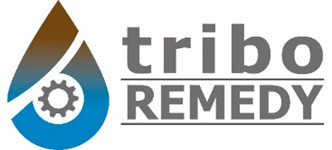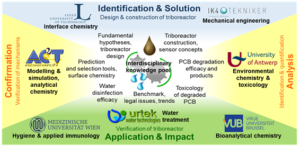triboREMEDY: The tribodevice as breakthrough remediation strategy for safeguarding human and environmental health
Environmental remediation for safeguarding human health is difficult. Effective processes enabling scalable operability are lacking. triboREMEDY aims at solving this impasse by providing the foundational steps towards the novel technology called “tribolysis” for safe, controlled, and efficient degradation of hazardous chemicals and effective inactivation of the pathogens. The scientific and technological breakthrough of triboREMEDY is based on the generation of nascent surfaces, high pressures, and shearing forces that will supply the required activation energy for dissociation of polychlorinated biphenyls (PCBs) and cell disintegration of pathogens. The centrepiece of triboREMEDY is the development of a system that mechanically induces chemical reactions. This should be as viable alternative to A) highly costly incineration or storage of hazardous waste, notably PCBs, and B) chemical, thermal inactivation or ultra-violet irradiation of pathogens in drinking water. The main project aim is to set scalable design rules for the system (proof of concept) based on the identification of PCB degradation products and pathogen inactivation pathways together with their relationships to operational parameters.
triboREMEDY Project is carried out by a multidisciplinary team of excellent researchers in mechanical engineering, chemistry, physics, biology.
The project started the 1st of March 2019 and has a duration of 4 years.
The work in the project will be divided in 7 work packages leaded by the partners of the consortium.
WP1 – Tribodevice layout
In WP1 there is the definition of the tribodevice configurations and operating parameters (input for WP2) and detailing hypotheses on tribolytic degradation mechanisms (input for WP5) and the analytical methodology to monitor tribolytic mechanisms
Leader: Lulea University of Technology (LTU)
WP2 – Setup of tribodevice for proof of concept
Design, construction, and setup of the tribodevice (early-lab device) to realize the proof of concept of tribolysis for PCB degradation (WP3) and pathogen inactivation (WP4) based on the findings from WP1.
Leader: IK4-Tekniker (TEK)
WP3 – PCB degradation for environmental protection
Proof of concept that tribodevice (early-lab device) is useful for efficient PCB degradation benchmarked against existing PCB disposal methods. Determination of tribolysis efficacy defined by the reduction of PCB concentration and decrease of activity in CALUX tests (and other receptor tests) relative to untreated samples.
Leader: Vrije Universiteit Brussel (VUB)
http://we.vub.ac.be/en/analytical-environmental-and-geo-chemistry
WP4 – Water disinfection for the benefit of human health
Proof of the disinfection efficacy of tribodevice will be benchmarked against the efficacy of existing water disinfection methods, measuring the by loss of microorganism proliferation relative to untreated samples.
Leader: Medical University Vienna (MUW)
https://www.meduniwien.ac.at/hp/en/hai/
WP5 – Tribolytic degradation mechanisms
Tribolytic degradation mechanisms are elaborated and correlated with tribocontact conditions thus supporting qualitative and quantitative proof of concept and providing scientific design guidelines.
Leader: AC2T research GmbH (AC2T)
WP6 – Feasibility studies for future applications
Feasibility study to apply the triboREMEDY concept to (1) scale up and automatize the process, (2) for the online systems including sensors needed to control the system, (3) for Persistent Organohalogenated Polutants (POP) and chlorinated paraffins (CP). Also other possibilities will be examined.
Leader: Lulea University of Technology (LTU)
WP7 – Project management, dissemination and IPR
WP7 will be useful as support for the other WPs and to ensure that any possible problem faced during the project can be solved without complications. Within this work package, there are the tasks of project coordination, reporting, data management plan, dissemination planning and intellectual property rights definition.
Leader: IK4-Tekniker (TEK)

